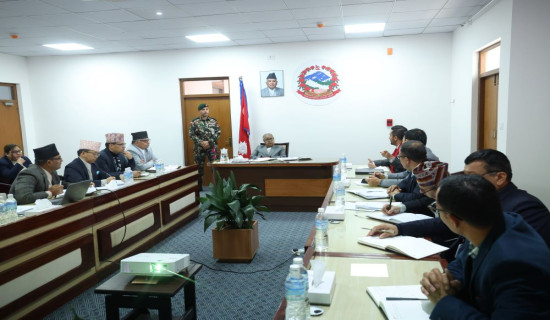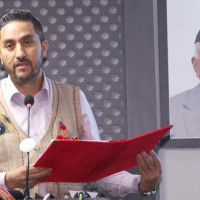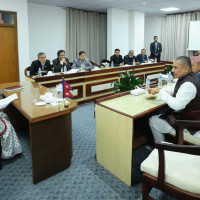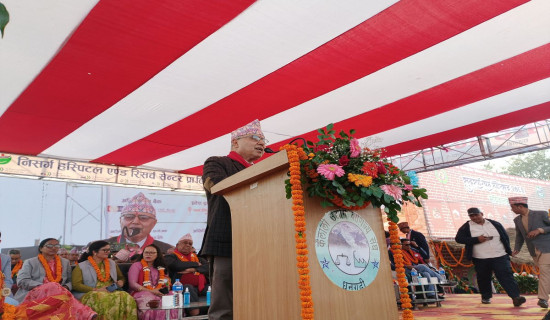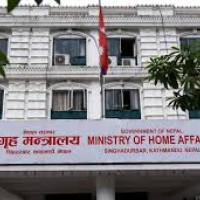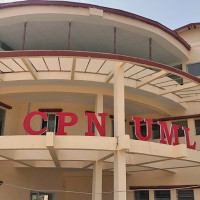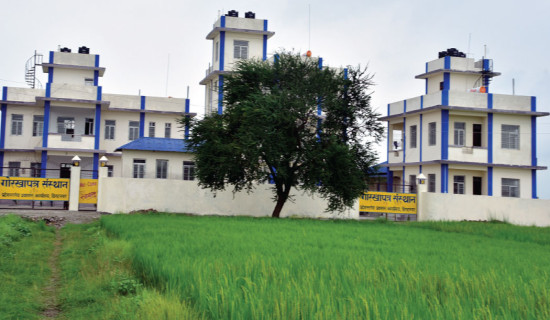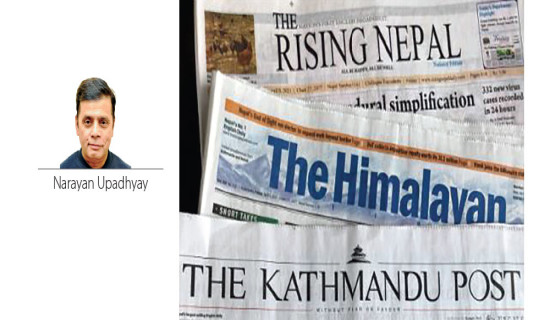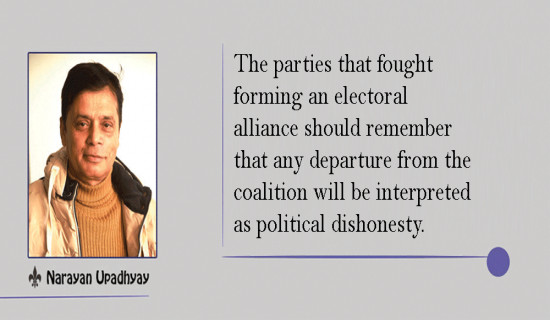- Tuesday, 9 December 2025
Bad Roads, Rash Driving Push Safety To Back Seat
In our country, road accidents that claim the lives of several innocent travellers or pedestrians happen almost every day. Road and highway accidents involving various types of vehicles lead to more deaths than any other cause. When the monsoon arrives, the number of such accidents and deaths doubles.
More than three weeks ago, rain-triggered debris swept away two buses on the Mugling-Narayanghat highway in Chitwan district. The doomed buses plunged into the swollen ravine, known as Trishuli. The ongoing monsoon season has made it difficult for rescuers to locate the buses with around 65 passengers, as the river current is still at its highest.
Except for three individuals who leaped out of the falling bus and swam to safety, passengers of two buses perished. Search teams have discovered bodies of passengers from as far as 140 kilometres from the accident location. Despite the involvement of trained Nepali police, armed police, and army personnel, the drowned buses and passengers could not be found during the search operations. Our authority requested assistance from India in the search of the missing buses, but ten men from India, belonging to the rapid disaster response authority, could not find the buses in the challenging Trishuli river.
The Indian team, despite using modern gadgets, failed to find the missing buses and eventually abandoned their rescue mission. The Nepali rescue teams pressed into the task in Trishuli, too, and have given up following over three weeks of search operations. Experts have said that the fierce current in the river must have disintegrated the drowned buses into several parts and swept them away far and wide. The relatives of the lost passengers have also given up hope of finding their loved ones' bodies.
The Simtal accident clearly demonstrated the difficult nature of roads in our country, which often pose threats to travellers. Among the accidents that occurred on Nepali roads, the Simatal accident stands out as the most serious one. It happened on July 12, 2024, and raised several questions on highway safety, mistakes by drivers and authorities, and failure to stop buses plying on dangerous roads during nighttime on the road surrounded by rain-soaked hills. Frequently, when a passenger vehicle plunges into Trishuli, rescuers struggle to locate it promptly, resulting in the loss of many travellers' lives.
On average, Nepal experiences 65 daily traffic accidents, causing seven deaths and 83 injuries. On average, Nepal records about 4,000 deaths per year owing to road accidents. According to authorities, motorcycles and scooters make up over 80 percent of these traffic-related accidents. Cars, sedans, Jeeps, and pickup vans rank second in terms of accidents among light vehicles. When it comes to fatalities in road accidents, buses are the primary cause of deaths involving vehicle accidents.
The severity of the situation became evident through the statistics presented by the Nepal Demographic and Health Survey (NDHS), 2022. Road accidents pose a significant threat to the lives of motorcycle passengers, resulting in a high death toll. According to the survey, there are 14 deaths per 100,000 people.
Because there are no alternative land transport systems such as railways, underground metro railway systems, and wider highways connecting the capital Kathmandu or city centres and districts with other regions, people must rely on various types of buses, ranging from modern luxury buses to old, unreliable ones that occasionally pose risks on the roads.
Road construction happening in multiple regions of the country, even in remote hill districts, is causing people in distant locations to utilise alternative transportation options for their travels. In the meantime, the so-called development drive in the country caused the haphazard construction of roads, leading to numerous road accidents. It is said that many accidents in hilly and remote areas are happening because of poor road construction under the ongoing development drive.
Despite rapid construction of roads, much of the country’s roads are substandard and pose life-threatening challenges to unsuspecting travellers, with many being fair-weather trails. The lack of road safety standards made the problem worse. Out of the total 77,302.68 kilometres of road in Nepal, only 25,000 kilometres are deemed safe as per the NDHS report. In the meantime, the skills and experiences of vehicle drivers greatly impact the lives of common travellers while travelling on challenging and poorly constructed roads. Fatal consequences result from mistakes made by passenger vehicle drivers. Drivers who struggle with challenging roads on steep hills or fail to notice vehicles approaching from the opposite direction or parked vehicles cause many accidents.
Despite the rise in road accidents and vehicle registrations, few have investigated and addressed the issue in Nepal, as several factors influence the increase in road accidents. Nepal’s challenging topography, weather, and poor road and vehicle conditions contribute to these issues. Engineers adhere to specific standards when constructing major highways, but local roads often lack sufficient engineering oversight. Local governments often build rural roads haphazardly, disregarding technical criteria and posing a risk.
Drivers' reckless driving and speeding contribute significantly to road traffic accidents. Many drivers have insufficient training and understanding of traffic regulations and vehicle upkeep. Drivers have insufficient training and understanding of traffic regulations and vehicle upkeep. An effective driver licensing and training process for truck and bus drivers is lacking.
In the meantime, our country’s challenging topography and weather make road construction and maintenance in Nepal difficult. Highways frequently crossed mountains, cliffs, and narrow river gorges. The monsoon season leaves sections of major highways, like the Mugling-Narayanghat Highway, damaged and vulnerable to landslides and rockslides. Lack of proper highway engineering contributes to occurring many accidents. Driving becomes unsafe because of the disparity between road curves and vehicle speeds, as well as the prevalence of blind spots.
Government officials often collude with local contractors to later construct substandard roads, disregarding safety and engineering regulations. The problem worsens due to interference from leaders and bureaucrats, transforming roads into death traps.
Road construction and maintenance must meet rigorous engineering standards. Building roads in hilly regions demands sufficient supervision and technical knowledge. The transport and traffic department needs to focus on educating drivers about traffic rules, vehicle maintenance, and safe driving practices.
The immediate need is to provide training and equipment for emergency responders. It is important to train security forces and rescue personnel to respond to road accidents involving passengers. Medical readiness is also required to treat wounded travellers, saving their lives and reducing road fatalities. Also, to ensure effective coordination of road safety efforts, it is crucial to create a road safety supervising body. The authority needs the ability to enforce road safety laws, streamline decision-making, and ensure effective implementation of safety measures.
Road accidents are a big worry due to several factors that often cause the frequency of such accidents. In order to create effective solutions, it is essential to understand these factors. Implementing automated traffic signals, surveillance cameras, and real-time traffic monitoring can help improve traffic management and emergency response services. Land travel in Nepal is full of a crisis due to the alarming increase in road accidents, necessitating immediate and comprehensive intervention. Enhancing road infrastructure, driver training, and emergency response capabilities can greatly reduce the toll of RTAs in Nepal and save countless lives.
(Upadhyay is a former managing editor of this daily.)



